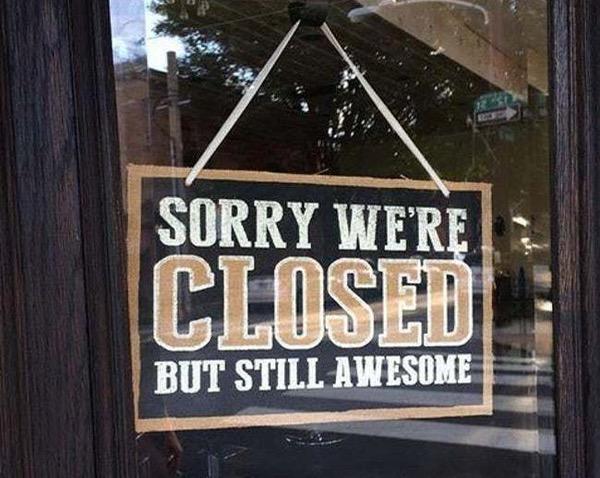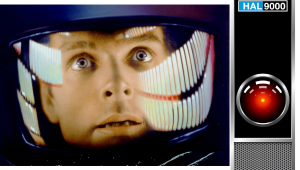Homeward Bound: Things to Do In Your Free Time

There’s currently no endgame for all of this. Where are the goalposts? Zero deaths? That’s is not even a goal for the common flu, or for car accidents, both of which kill tens of thousands of Americans each year. Government at all levels is doing its best, but in the end their answers, as always, end with a shake-down of the Money Fairy.
All that said, how do we cope with our personal worries and housebound boredom? I’m lucky enough to work at home, and while the reviewing queue is sparse at the present, a couple of 2020 TVs are expected imminently. But they’ll have to stay packed up for a few days to make sure that no live cooties are still clinging to the boxes! Such is the state of the world in March 2020.
But if you share the same interests as most of us here at Sound & Vision, you don’t have to look far for things to do. Clean out that equipment rack, rearranging things you’ve been promising to do for months (or years) before those dust bunnies behind the cabinet get organized and launch an attack. They can smell fear. Or simply enjoy some tunes or movies. That’s happening a lot these days, even among the general public.
Discs Aplenty
Stocks may be tanking, but if you own shares in Netflix or Amazon you’re golden. And if, like me, you have an extensive collection of CDs, LPs, DVD’s, Blu-rays, and Ultra HD Blu-rays you won’t run out of things to do even if the internet goes down. I’ve just heard that in Europe they’re throttling back some streaming sites from HD to SD, which reduces the needed bandwidth by one-third. Their circuits are overloaded with folks streaming as much entertainment as they can find. No issue for me; if I watch a movie a day from the HD and the few remaining SD (DVD) discs on my shelves I’m good for over three years.
There’s also that pile of HD DVDs I accumulated way back when but haven’t touched in years (though I still have two HD DVD players gathering dust!). I even have a small collection of laserdiscs, though the last time I tried to watch one, just for grins, I was amazed that we once thought they looked fantastic.
YouTube Beckons
I’ve also been streaming a lot of YouTube videos lately as well. The offerings there are impossibly vast, with multiple entries on virtually any subject you can think of and many you can’t imagine. In addition to copious audio/video entries (called channels for some odd reason), I also surf history sites. History has long been one of my passions. It was my best subject in high school but I studied engineering in college. Pay a fortune for someone to teach me something I could easily acquire by reading books on my own didn’t seem financially sensible to me.
But thanks to YouTube I now know a thing or three about ancient Rome that are absent from most history books. For example, ancient Romans were unlikely to make a run on the toilet paper shelves at Trader Cicero’s something about a sponge on a stick is more than you need to know about how they coped, with or without the plague. And oh yes, I also learned that toilet paper itself is a recent invention, dating back only to the mid 1800’s. By 1900 or so Scott marketed the first splinter-free variety to an eager public.
But there’s more uplifting content on YouTube as well. It remembers your search history well enough to feature items that might specifically interest you on its entry pages. Creepy to be sure, but helpful. I’m interested in many kinds of music, and discovered some symphonic classical performances, in both high quality video and audio, that knocked me out. Most of them originated in Europe, and include not only classical pieces for the full symphony orchestra but also film scores and lighter pop-classic “war horses.” Most of the latter have been overplayed to death but are popular for a reason; they appeal even to music fans who don’t often listen to symphonic music.
Prime examples of this are such works are the 1812 Overture and Scheherazade. With a YouTube search You can find a terrific performance of the latter by the Vienna Philharmonic Orchestra from 2005. Check out the final movement, starting at 30.28. It’s so fast it will leave you wondering if the video transfer was sped up! But likely not; the Vienna Philharmonic is frequently rated as one of the best, if not the best, symphony orchestras on the planet. Watching the players successfully coping with the conductor’s breathless pacing is jaw-dropping.
Even if you’re not into this sort of music, or think you’re not, it’s free to try (apart from your internet bill) and worth a little of your currently mandated free time. For another similar search, go Academia Filmu Telewizji. This will bring up a large number of selections (including both classical and film music) from an extremely accomplished youth orchestra. And if you want to try something a little more complex, search for the Frankfurt Radio Symphony’s performance of Saint-Saens’ Organ Symphony (no.3). If you’re not sure you’ll like it, just listen to the final movement (starts at 30:36) the only movement that brings in the organ. You won’t be bored.
There may be no better use of (mandated) free time than discovering new things. In any of these selections there’s something intriguing and even enlightening in watching players actually performing symphonic music, particularly in the close-ups that only video can provide. You can’t fully appreciate how much precision and team work goes into an orchestral performance unless you can both hear and see it. Music is called a performance art for a reason.





























































